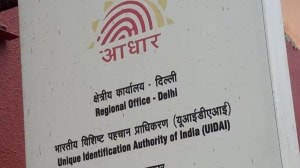Unlike the European Union (EU) model of stressing overly on regulations, India’s upcoming Digital India Act will give equal weightage to innovation and social issues, communications and IT minister Ashwini Vaishnaw told FE in an interview.
This means that the regulations will not only protect the safety of users, but also give space to companies for developing new technologies without imposing rules, which throttle innovation.
Even with regard to social media companies in the context of Section 79 safe harbour status, the regulations will ensure the accountability of all the three stakeholders – users, platforms, and government.
“Globally, it is needed that there should be accountability of social media platforms. In India, we will try to set the stage in a way where probably we should become the thought leader in the world,” Vaishnaw said.
He added that the countries including those which have followed the EU’s regulation model are starting to understand that India has a clarity in the thought process for shaping up the regulations.
The Digital India Bill is currently undergoing stakeholders consultation, post which it will be released for public consultation. The government is targeting winter session of the Parliament to introduce the Bill, which seeks to replace the 23-year old Information Technology Act.
Apart from the regulations around the emerging technology, the Digital India Bill, will define the regulations with regard to big tech, have separate rules for different intermediaries such as e-commerce, search engines, gaming, etc, provide for accountability of platforms like social media companies and misinformation, among other key things.
The government is also considering to modify safe harbour provisions under Section 79, which gives social media companies legal immunity against the users’ content being posted on their platforms. On the regulations for open AI technologies and the data breaches from that, Vaishnaw said, “no Bill can ever address everything. What we should always think upon is what are the guardrails? What are the boundary conditions? What are the principles? Those principles we set in and then apply as per situations and circumstances”.
He said that the government does not want to be prescriptive. “We are trying to set principles and the boundary conditions,” Vaishnaw said, adding that this is the new thought which is being appreciated by countries globally.
Apart from the regulations and the technology space, the government is also looking to improve the domestic value addition in the electronics manufacturing space.
Value addition is where domestic component is high when a made-in-India product is sold. Vaishnaw said, “In component manufacturing, what is necessary is the scale of development. If scale is developed for the end product, then for component manufacturer, a natural incentive gets created”.
He added that there is no need for a separate component PLI scheme and the current Scheme for Promotion of Manufacturing of Electronic Components and Semiconductors (SPECS) is the foundation for electronics industry. Lately, the government is also looking at extending the outlay of the scheme to Rs 10,000 crore and extend it for a period of five years.
Through manufacturing of semiconductors and other electronics components, the government is targeting to increase India’s value addition to 70% from the current 20%, Vaishnaw said.








